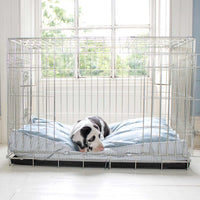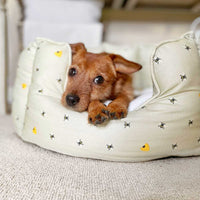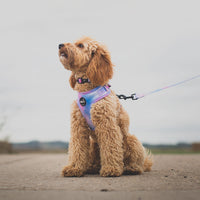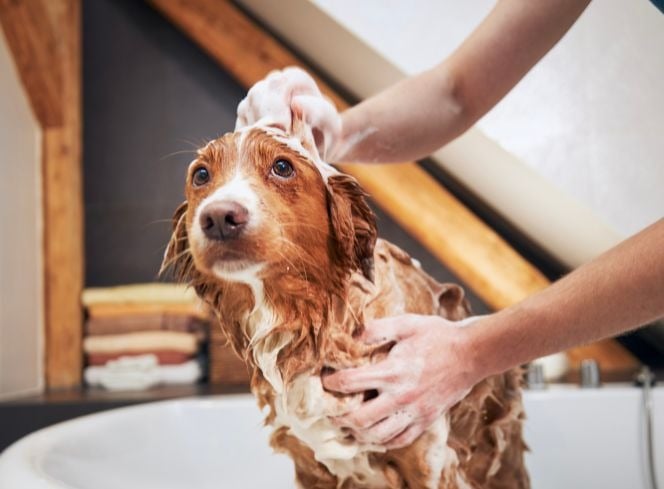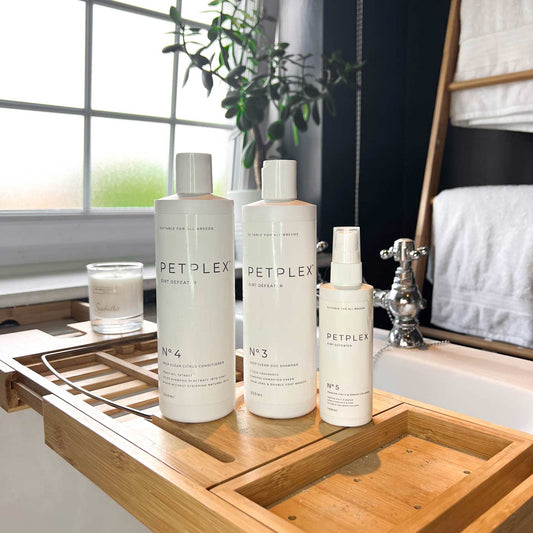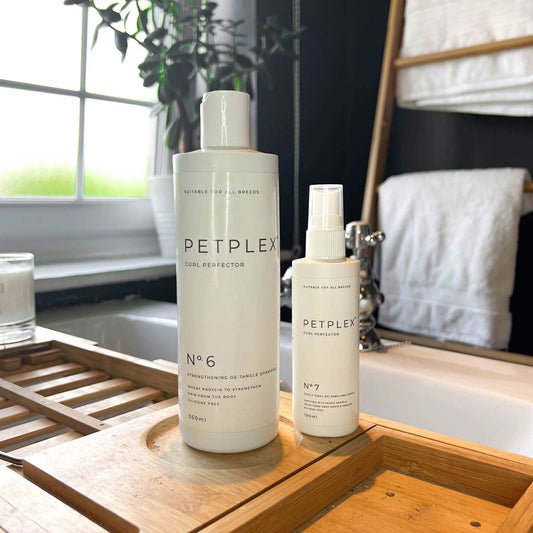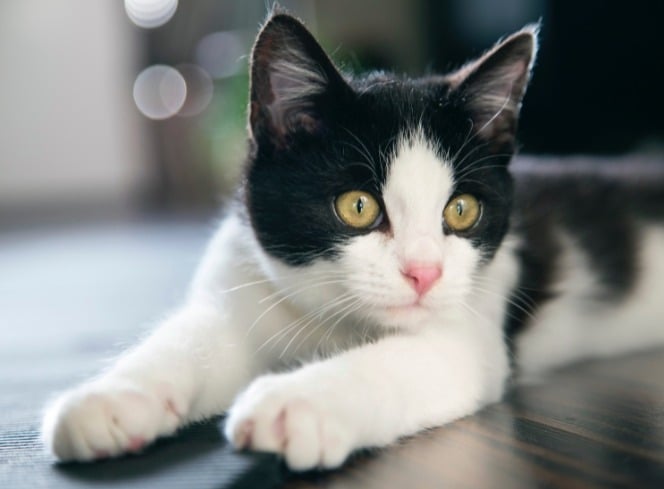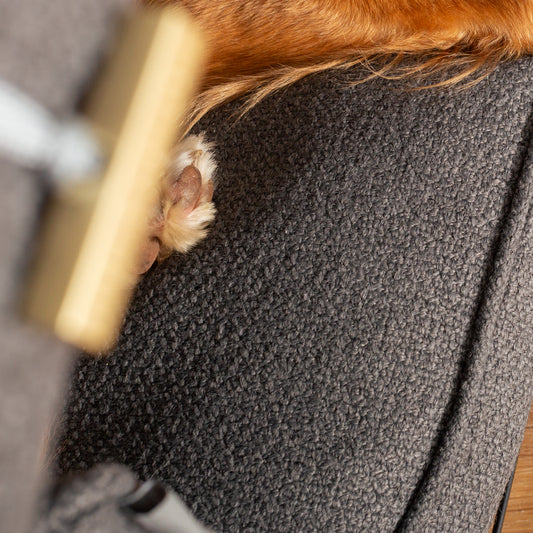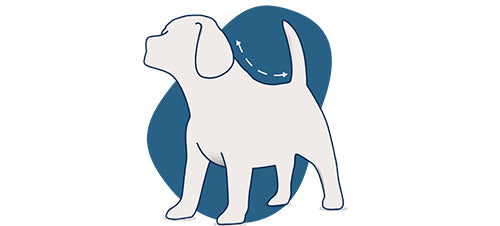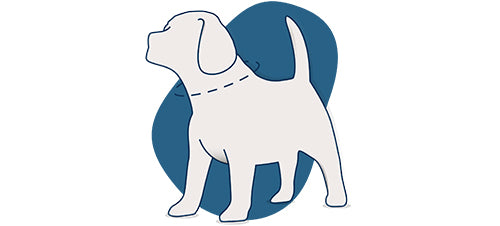Grooming your furry companion isn't just about keeping them looking their best; it's also vital for their health and well-being. A well-curated dog grooming kit is your secret weapon in ensuring your pup stays clean, healthy, and comfortable. Whether you're a seasoned pet parent or a newbie to the world of dog grooming, having the right tools is key. Here's a comprehensive guide to assembling the ultimate dog grooming kit for home use.
1. A brush or comb
A good brush or comb is essential for any coat type, they will help keep your dog’s coat in tip-top shape. For shorter coats a brush will help remove any loose fur or debris. For long or curly coats brushing is going to help untangle any mats or knots in their coat whilst also removing loose fur or dirt. To find the best brush or comb for your dog’s coat type check out our Brushing Your Dog Guide, it has everything you need to know about the best brushing techniques to the perfect tools to suit your furry friends coat type.
2. Nail Clippers or Grinders
Trimming your dog's nails is crucial for their comfort and mobility. Choose between nail clippers or grinders based on your comfort level and your dog's temperament. Ensuring proper nail care is a vital aspect of any grooming routine. We know getting your dog to stay still to have their nails trimmed can be tricky, our pet experts have put together their top tips on how to make cutting your dog’s nails as easy as possible.
3. Dog-Specific Shampoo and Conditioner
Not all shampoos are created equal, especially when it comes to our furry friends. Invest in a gentle, dog-specific shampoo and conditioner to maintain a healthy coat and skin. Look for products that cater to your dog's specific needs, such as hypoallergenic or medicated formulas.
Our PetPlex range has been developed to professional grooming standards to suit all coat types. The puppy purifier range is perfect for sensitive puppies, it even smells like baby powder which is just scrumptious on tiny puppies. For short haired dogs and mucky pups the dirt defeater range is perfect, with it’s tropical smells even the muckiest of dogs will smell as fresh as a daisy. For dogs with luscious curls and long locks our curl perfector range is the one to go for, it’s great for detangling and creating that perfect curl pattern. Lastly for sensitive pups we recommend our Derma Doctor shampoo, it’s fragrance-free and full of mild ingredients, this shampoo won’t strip away natural oils or irritate the skin.

4. Detangling Spray
For long or curly coats a detangling spray is a must have. Our PetPlex curl perfector detangling spray is a ready to use, no -rinse formula that will help tease away knots and tangles to make brushing a breeze. Reducing brushing time as well as adding a great scent to your dog's coat.
5. Ear Cleaning Solution
Ear hygiene is often overlooked but is crucial to your dog's health. An ear cleaning solution and soft cotton balls or pads help keep your dog's ears clean and prevent infections. Regularly inspect and clean their ears to avoid any potential issues.
There’s two main options for ear cleaning solutions, they come in either a liquid which you drop into the ear canal and use a cotton ball to massage the dirt away or there are pre-soaked ear cleaning pads which you simply rub in your dog’s ears to remove the dirt. The best option will entirely depend on your dog!
6. Towels and Drying Equipment
Absorbent towels designed for dogs are ideal for drying after a bath or a rainy walk. We love a drying coat for after bath time or a mucky walk, our bamboo drying coats are super soft and snuggly and make drying fuss-free and quick. For dogs who don’t love to wear a coat why not try some drying mitts, they great for quickly rubbing their coats dry to take off any excess moisture.

7. Dog Grooming Clippers and scissors
If you have a long coated dog they will need their hair cutting. You have two options for this you can either take them to a groomer or do it at home - the best option will entirely depend on your dog, some owners are nervous to cut their dog’s coats themselves whereas others find it easier due to their dogs being apprehensive about going to the groomers.
If you’re planning on cutting your dog’s coat at home investing in quality clippers tailored for your dog's coat type is paramount. Clippers come in various sizes and strengths, so choose wisely based on your pup's breed and coat length. Opt for clippers that are comfortable to hold and operate to ensure a smooth grooming experience for both you and your dog.
If you have a long coated dog we recommend having a pair of thinning scissors at home, this means you can easily trim round their eyes and mouth between grooms as their hair will often get long on their face quicker than on their body.
8. Styptic Powder or Gel
Accidents happen, especially during nail trimming. Having styptic powder or gel on hand can quickly stop minor bleeding if you accidentally cut your dog's nails too short. It's a must-have for any grooming kit. We love the Charlie the Vet first aid kit, it has styptic powder in as well as so many other essentials in case of accidents - it really is a must have for any dog owner.
9. Toothbrush and Toothpaste for Dogs
Dental hygiene is a vital part of your dog's overall health. Use a toothbrush and toothpaste designed for dogs to maintain their oral health and prevent dental issues. We love the Tropiclean range, they have dental care solutions for all sizes and ages to keep your dog’s teeth squeaky clean.
10. Licky Mat
We couldn’t do grooming time without a licky mat, they are great for sticking to the side of the bath or the wall to keep your dog busy. We usually put peanut butter or wet food on their mats to keep them busy, licking is also a calming behaviour for dogs so it’s perfect for pups who are more nervous for grooming time!
Creating a well-equipped dog grooming kit is a thoughtful investment in your dog's health and happiness. Remember, grooming isn't just about aesthetics—it's about fostering a strong bond with your furry companion while ensuring their well-being. Selecting the right dog grooming tools and supplies tailored to your dog's needs is the key to a successful and enjoyable grooming experience at home.

























































